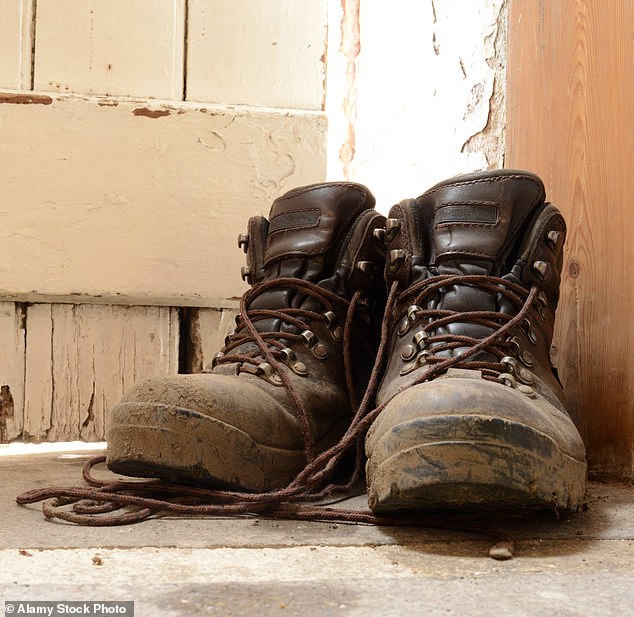FIVE tell-tale signs you may have been sleepwalking, revealed by experts
Have you ever woken up feeling uneasy and wondering if you had unknowingly taken a midnight walk?
This may be more likely than you think, with new research from the sleep tech company Simba This suggests that up to 20 percent of us sleepwalk.
According to The Sleep Charity, sleepwalking episodes usually last only a few seconds to half an hour, and occur during deep sleep, the non-REM slow wave portion of the sleep cycle that occurs in the first few hours after falling asleep.
Lisa Artis, sleep consultant at The Sleep Charity, gave five signs you may be sleepwalking, as well as advice on how to deal with this in yourself and others.
How can you know if you have been sleepwalking? Find out by reading on.
One in five of us sleepwalk at some point, so did you ever think you could be one of them?

In extreme cases, people may find themselves walking outside while sleepwalking, so keep an eye out for unexplained muddy shoes in the morning.

Another sign of dishes being left in the kitchen; Eating is the sixth most common sleepwalking activity, according to new research
How do you know if you have sleepwalked?
Someone tells you
The most obvious sign is that someone tells you.
If you share a bed with a partner, while you may think he/she is confusing you, sleepwalking is far from subtle and will likely disturb him/her while he/she sleeps.
And while waking someone who is sleepwalking won’t harm them—contrary to popular belief—it’s still more useful to try to guide someone back to bed than to interrupt their sleep if they’re sleepwalking. whether she is walking.
So by the time you wake up, you may be none the wiser if your partner has witnessed your sleepwalking.
Your coat is on
In some cases of sleepwalking, people have been known to open the wardrobe and change clothes as if they were going to work or away for the day.
So if you’ve been sleepwalking, you might wake up completely bewildered because you’re wearing a brand new outfit.
Walk by starlight
In a similar vein, some extreme cases involve people leaving their homes and going for a walk or even driving.
So if you suspect you are sleepwalking, it may be worth checking your shoes to see if they have shifted or if there is a trail of mud on the soles.
If you think you may be experiencing such extreme sleepwalking, try to keep the environment safe by keeping shoes and car keys in harder-to-reach places.
Something to think about
If you wake up with cookie wrappers on the floor or leftovers in the kitchen that you don’t remember having, you may have brought yourself a secret midnight snack.
You might even be cooking at night and find pots, pans, and other utensils off to the side.
According to the new research, eating is the sixth most common sleepwalking activity in Britain, ahead of cleaning and moving furniture.
Feeling tired
One or two episodes of sleepwalking are usually nothing to worry about, but if you feel tired all the time, the nighttime disturbances may be more common than you think.
Sleepwalking is a sleep disorder and it may be time to seek professional help.
Not getting enough sleep can be a trigger for sleepwalking. So you may be in a spiral and need something to break the behavior.
How to deal with sleepwalking
Whether you are a sleepwalker yourself or live with one, it can be extremely worrying to think about what could unexpectedly happen to you or your loved one from one day to the next.
That’s why Ms. Artis also gave 10 ways to help deal with sleepwalking.
Know the triggers
Although the exact mechanisms behind sleepwalking are unknown, there are known links between the behavior and certain habits or ‘triggers’.
Ms Artis said: ‘It can be hereditary and caused by jet lag, lack of sleep, stress, fever, illness, drugs and alcohol, certain medicines for conditions such as epilepsy and psychosis, and antihistamines. Sleep apnea is also a risk factor.
‘It is not recommended to stop taking prescribed medications without a doctor’s advice. So tell your doctor if you are concerned about side effects.
‘And try not to drink alcohol in the evening, at least three hours before bedtime.’
Don’t wake someone up unless you have to
According to the sleep consultant, you should not attempt to wake a sleepwalker unless you feel you have to, despite claims that waking them could harm or shock them, as this is a ‘myth’.
She added: ‘It can be difficult to wake a sleepwalker and he or she may become disoriented or even lash out at those trying to wake him.
‘If they are wandering around, it is obviously important to keep them safe and gently return them to bed.’
Use the toilet before going to bed
Going to the toilet ranked fifth in the study for activities while sleepwalking. This means that reducing the amount of time you have to go may keep you from sleepwalking in the first place.
‘It is useful to empty your bladder just before the lights go out, as having to go to the toilet at night is disruptive and can reduce the incidence of sleepwalking,’ says Ms Artis.
Remove obvious hazards
It may seem a bit extreme, but for persistent nighttime wanderers, it can be a good idea to stash away car keys and keep the front door securely locked from the inside, especially if they’re staying somewhere unfamiliar, like a hotel.
Keep the floor free of tripping hazards and children who tend to get up during the night should always sleep on the bottom bunk to avoid accidents.
You can install stair gates to protect your child from falling down the stairs.
Stick to a healthy sleep schedule
Sleep deprivation is a common contributing factor to sleepwalking, so sleepwalkers will benefit from sticking to a sleep routine that gives them a good night’s sleep every night.
‘Consistency is important,’ says Ms Artis, ‘so you should aim to go to bed and get up at the same time – even on weekends – with an evening relaxation routine that gives you the best chance of a deep, soothing experience. sleep.’
Use motion sensors or alarms
Staying up all night to watch over someone is neither practical nor sustainable.
A motion sensor, similar to a baby monitor, can do the work for you and record every activity.
It might even alert a sleepwalker itself enough to wake him up or encourage him to go back to bed.
Try cognitive behavioral therapy
If sleepwalking occurs during periods of high stress, cognitive behavioral therapy (CBT) can help.
Disruptive life changes, such as bereavement, divorce or redundancy, can have a huge impact on mental health. Artis said it is “proven to improve insomnia and sleepwalking.”
Use the expected awakening
Sleepwalking often occurs at the same time every night, so if this is the situation for your partner, you can try gently waking the sleepwalker just before he/she usually sleepwalks to reset the sleep cycle and break the habit.
And if you’re somehow aware that you’re sleepwalking at a set time (perhaps you’ve seen it on CCTV), consider setting an alarm that will have the same effect.
Pay attention to your ‘sleep hygiene’
Sleep hygiene covers both behavior around sleep and the overall sleeping space.
Our sleeping environment has a major influence on our sleep quality. Therefore, we should ensure that our bedroom is quiet, dark and relaxing before and during sleeping hours, with an optimal room temperature between 18 and 20 degrees Celsius.
For the best chance of a good night’s sleep, ditch the electronic distractions.
Find your nearest sleep clinic
Sleep clinics can treat parasomnias: types of sleep disorders, such as sleepwalking, that tend to balance the two states of sleep and wakefulness.
This usually involves patients participating in a sleep study, where they are observed while they sleep.
